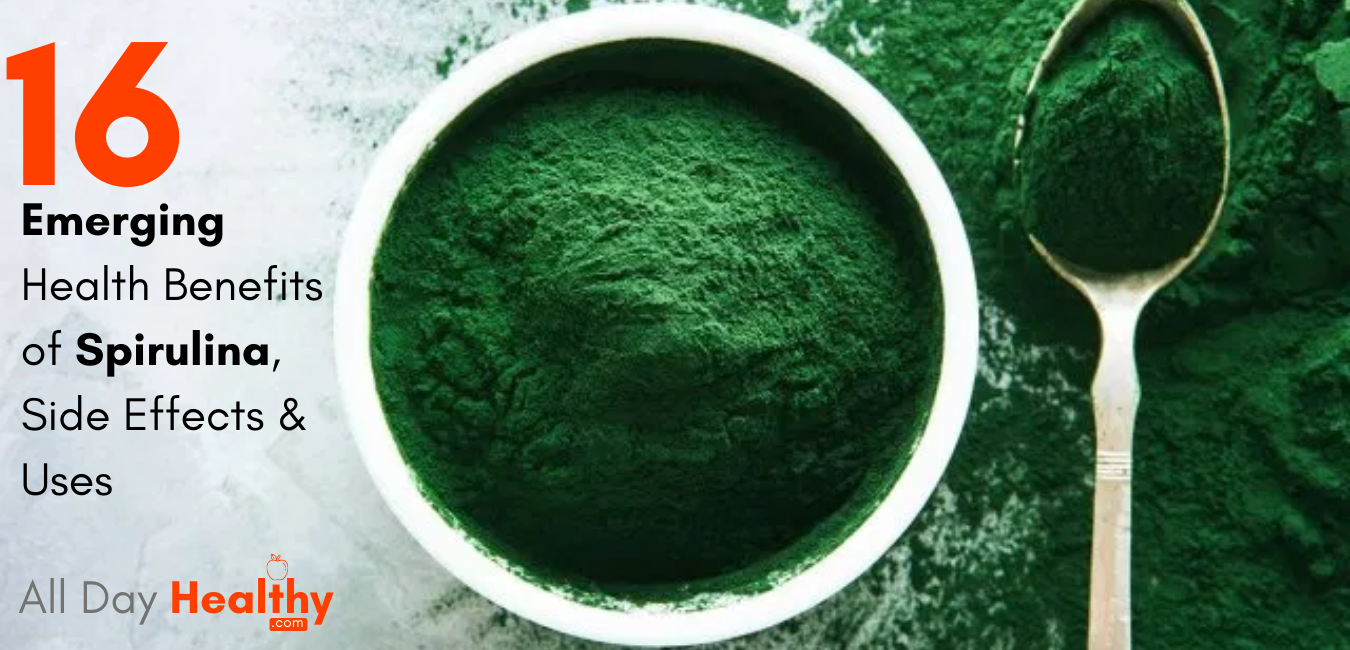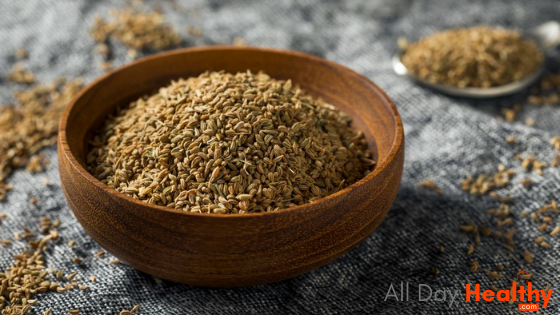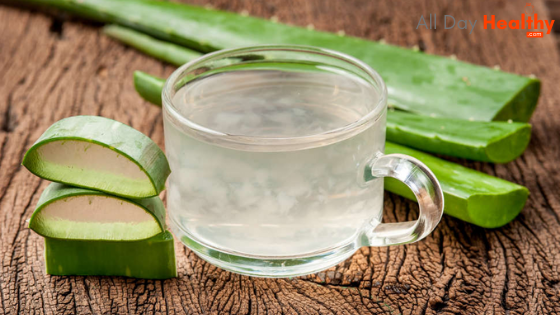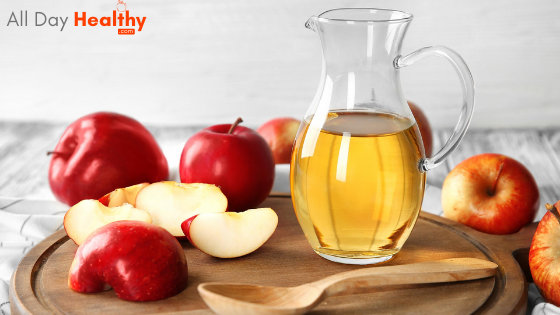The health benefits of Indian gooseberry, also known as Amla, can be partially attributed to its high vitamin C content. The Indian gooseberry helps in boosting the immune system, slowing down aging, treating throat infections, reducing blood sugar levels, and improving heart health.
26 Amazing Health Benefits of Indian Gooseberry (Amla), Side Effects, Dosage
Amla acts as a diuretic agent and is therefore thought to enhance food absorption, balance stomach acids, fortify the liver, and nourish the brain and mental functioning. It also strengthens the lungs, enhances fertility, helps the urinary system, improves skin quality, and promotes healthier hair. This fruit increases vitality, aids in vision care, and improves muscle tone.
What Is The Indian Gooseberry (Amla)?
Indian gooseberry or amla (Emblica Officinalis or Phyllanthus Emblica) is an extremely sour, nutritious fruit of a tree that grows in India, the Middle East, and a few other Southeast Asian countries. It is known as Amla in India and Amalaki in Sanskrit. Due to its powerful antioxidant properties, it is often used as in Ayurvedic medicines to boost skin and hair health, and also overall immunity of the body. It belongs to the Euphorbiaceae family. This fruit ripens in the autumn in wet forests and hilly areas of the Indian subcontinent; the tree is considered sacred in India.
The fruit is light green in color and can be quite tart and fibrous to eat. In India, it is eaten with salt and chilly powder or made into a pickle or sugared candy. It is a vital ingredient of Triphala and Chyawanprash, both of which are traditional herbal Indian formulations to boost health. Amla is also available in various other forms, such as powder, juice, oil, tablets, and spice. Amla tea and dried amla are also consumed by many for its powerful nutritional benefits.
What are the Nutritional Facts of Indian Gooseberry (Amla)?
Amla Nutrition Per 100 Grams
Energy 44 Kcal
Carbohydrates 10.18 g
Protein 0.88 g
Total Fat 0.58 g
Dietary Fiber 4.3 g
Vitamins
Folates 6 mg
Niacin 0.300 mg
Pantothenic acid 0.286 mg
Pyridoxine 0.080 mg
Riboflavin 0.030 mg
Thiamin 0.040 mg
Vitamin A 290 IU
Vitamin C 27.7 mg
Minerals
Potassium 198 mg
Calcium 25 mg
Copper 0.070 mg
Iron 0.31 mg
Magnesium 10 mg
Manganese 0.144 mg
Phosphorus 27 mg
Zinc 0.12 mg
Amazing Health Benefits of Indian Gooseberry (Amla):
1. Boosts Immunity
Indian gooseberries are a natural immune booster as they contain a powerful cocktail of vitamins C and A, polyphenols, alkaloids, and flavonoids such as quercetin and kaempferol. According to a study published in the International Journal of Pharmaceutics, amla has potent antibacterial and anti-inflammatory properties. Amla juice, in Ayurveda, is often used to increase the white blood cells in the body, which are the mainline of defense for the immune system. White blood cells attack and eliminate foreign toxins and substances into the bloodstream throughout the body.
2. Controls Diabetes
Gooseberry contains chromium, which has a therapeutic value for diabetics. It stimulates the isolated group of cells that secrete insulin, thus reducing blood sugar in diabetic patients. When blood sugar is reduced, glucose is used by the cells as functional energy. Thus, the metabolism is stronger and you have more energy, without the plunges and spikes in blood sugar that are dangerous for diabetics. Chromium also enhances the effect of beta-blockers, which are used for heart health, by reducing the levels of LDL (bad) cholesterol in the body. A 2011 research study published in the International Journal of Food Sciences and Nutrition on the effect of amla fruit on blood glucose and lipid profile of type 2 diabetics stated that it has anti-hyperglycemic and lipid-lowering properties.
3. Aids in Digestion
Amla is very high in fiber, like most fruits. Fiber adds bulk to the stool and helps move food through the bowels and keeps bowel movements regular. This reduces the chances of constipation. Soluble fiber (found in many fruits) can also bulk up loose stools and reduce diarrhea. Amla also stimulates the secretion of gastric and digestive juices, so food is digested efficiently, nutrients are absorbed in an optimal way, and you feel lighter and healthier. A 2014 study published in the American Journal of Food Technology found that the amla and amla powder retained water. This property helps reduce constipation and can help protect you from various gastrointestinal disorders, and even has implications for colorectal cancer.
4. Prevents Heart Diseases
Berries –like blueberries and gooseberries–have been proven to improve heart health. Amla powder strengthens the heart muscles, so the blood circulation is more effective throughout the body. By reducing excess cholesterol buildup, chromium in amla powder can reduce the chances of atherosclerosis or plaque buildup in the vessels and arteries. This may reduce the chances of stroke and heart attack. The iron content in amla also promotes the creation of new red blood cells, thereby increasing circulation and the oxygenation of organs and cells to maximize growth and regeneration of tissues.
5. Acts as Diuretic
Besides being a fruit that is very high in water content, amla is also slightly diuretic in nature. This means that it increases the frequency and volume of urination. Urination helps our body eliminate unwanted toxins and excess levels of water, salt, and uric acid. Therefore, a diuretic substance is often beneficial for keeping your kidneys healthy and for preventing urinary and uterine infections.
6. Hair Care
Amla powder is used in many hair tonics as it enriches hair growth and hair pigmentation. It strengthens the roots, maintains color, and improves luster. Applying amla oil to the roots of your hair improves hair growth and color. Amla oil is very popular in India because it has been shown to reduce the chances of hair loss and baldness. This quality is due to the carotene content of amla, as well as its iron and antioxidant content that prevents free radical damage to hair follicles and hormones.
7. Acts as an Anti-Aging Agent
Amla prevents health-related hyperlipidemia by reducing the number of free radicals in the body through its antioxidant qualities. Vitamin C and antioxidants help scavenge free radicals; free radicals are associated with signs of aging like wrinkles and age spots. Amla powder is used as a face mask to remove age spots.
This wonder berry is known to be the best anti-aging fruit according to traditional Indian medicine. Regular intake of amla not only leads to healthy and glowing skin but also improves eyesight, boosts the immune system, and regulates blood sugar and lipids. Eat as murabba, pickles or candies; but consume it daily.
The easiest way to have amla is either raw or if you have a taste for it, you could even keep some dried amla candy with you to munch on whenever hungry. This will tackle the junk factor in your life without compromising on taste!
8. Eye Care
Drinking gooseberry juice – which is rich in vitamin A – with a bit of honey, is good for improving eyesight. It helps improve nearsightedness and cataracts while reducing intra-ocular tension. This is mainly due to its impressive carotene content, which has long been known for its powerful effect on vision-related conditions, including those that stem from the free radical damage. Vitamin A and carotene improves vision, while also lowering the risk of macular degeneration and night blindness.
The vitamin C in amla fights bacteria and guards the eye against conjunctivitis and other eye infections. Consuming Indian gooseberry regularly helps improve vision health. It also makes the eye muscles stronger and provides relaxation to the eyes when they are tired and stressed.
A study conducted in 2010 proved that the regular intake of the Indian gooseberry treated and reversed cataract in lab rats
9. Boosts Liver Health
Drinking amla juice, as per Ayurveda, boosts vitality and vigor, and the underlying reason for it is probably linked to its ability to re-energize the liver. Liver health is not paid much attention to, even though it affects a large part of the population. A 2013 study on the Hepatoprotective properties of the Indian gooseberry published in the journal Food & Function journal says the fruit is effective in preventing the toxic effects of excessive medication and toxic metals. The presence of phytochemicals such as quercetin, gallic acid, corilagin, and ellagic acid in amla helps in free radical scavenging and in turn, detoxifying the body.
10. Anti-Cancer Properties
Amla extract has been shown to have cytotoxic activity against cervical and ovarian cancer cells. Researchers from Montreal, Canada published a study that found Phyllanthus Emblica extracts have strong tumor repressive properties against a number of cancer types. Other research in the European Journal of Cancer Prevention shows that the tiny fruit is packed with potent polyphenols, flavonoids, and tannins, making it a powerful tool against a variety of conditions, including cancer and diabetes.
The build-up of free radicals in the body results in oxidative stress. This is one of the major causes of cancer.
The powerful antioxidants in the Indian gooseberry fight oxidative stress and eliminate free radicals from the body, thereby cutting down the risk of cancer.
The Indian gooseberry is rich in polyphenols and other compounds like gallic acid, ellagic acid, pyrogallol, and terpenoids – all of which act as antioxidants and work in multiple ways to treat and prevent cancer.
These are the ways the Indian gooseberry can benefit your health. The key is to include it in your diet on a regular basis. But how?
11. Aids in Calcium Absorption
One of the less-discussed benefits of the Indian gooseberry is how it helps the body absorb calcium in a positive way. Calcium is an essential component of our bones, teeth, and nails, and plays a part in ensuring we have beautiful, lustrous hair. One of the ways to obtain its benefits is by drinking diluted amla juice on an empty stomach.
12. Improves Metabolic Activity
Eating foods that are high in protein, like amla, is one of the most important ways to stay healthy. Protein is necessary for cellular growth, muscle development, organ health, and a wide range of metabolic activities that we need to remain healthy. Our enzymes can break down plant proteins into amino acids and reassemble them into usable proteins for our body.
13. Reduces Menstrual Discomfort
It is thought that the minerals and vitamins in the Indian gooseberry combine to make it very useful in the treatment of menstrual cramps. Consume Amla on a regular basis so that its nutrients are always in the system and menstrual cramps can be prevented or reduced.
14. Relieves Diarrhea & Dysentery
Due to its strong cooling and laxative properties, amla powder is a useful component in remedies for diarrhea and dysentery, according to a study published in the International Journal of Pharmacy and Pharmaceutical Sciences. It provides relief from the various gastric syndromes and hyperchlorhydria (burning sensation in the abdomen). As a laxative, it helps flush out toxins or harmful substances that cause discomfort or illness, so the healing process can begin. It then cools the burning sensation and reduces the discomfort often felt during diarrhea.
15. Improves Appetite
Consuming gooseberry powder with butter and honey before a meal can improve appetite. In other benefits, amla is also used as a remedy for fever, liver disorder, indigestion, anemia, urinary problems, respiratory problems, and cerebral, gastric, and cardiovascular illnesses. Gooseberry lowers cholesterol levels, increases red blood cell production, and strengthens teeth and nails.
16. Helps In Secreting Insulin
Chromium, a mineral that helps in regulating carbohydrate metabolism and beta cells for the secretion of insulin is widely found in amla. Regular intake of this citrus fruit not only repairs pancreatic tissues but also prevents the damage of insulin-producing cells. Eating raw amla daily in the morning enables the body to more receptive to insulin.
17. Improves Gut Health
Ayurveda strongly recommends starting your meal with a recipe made from amla as it helps in detoxifying and flushing out the wastes. Rich in fiber it regulates bowel movements and also increases the production of digestive juices. It also aids the body in better absorption of the nutrients. If you are suffering from IBS, constipation or other gut issues, drink amla juice in the morning to clean your system.
18. Hair Growth, Treats Dandruff, Delays Premature Greying, Hair Conditioner
Indian gooseberry possesses various plant compounds, vitamins, and minerals that aid in the growth of healthy hair. Vitamin C in amla increases the collagen that adds length and volume to the hair. It also replaces dead hair cells on the scalp and regenerates the new ones.
Do you know that amla is the richest source of vitamin C? One small fruit provides you more vitamin C than you can find in a single serving of orange. Regular intake of amla hydrates the scalp and prevents dandruff. Being strong in anti-bacterial and anti-inflammatory properties, it also prevents scaling and itching.
According to Ayurveda premature greying is a disorder that is caused due to excessive pitta in the body. Amla is a natural coolant and it slows down greying. Add amla powder to henna and apply it as a hair pack to retain the natural color of the hair. Regular intake of amla in the form of juice, powder, and candy is also highly beneficial in preventing premature greying.
Regular application of amla hair oil serves as a conditioner and it helps in strengthening and nurturing the hair. It also makes your mane look lustrous as one single amla contains around 80 percent of moisturizing. If you have oily hair, use this daily as it absorbs excessive oil and conditions the hair.
19. Effective in Hypertension Problems
Studies reveal that regular intake of amla helps in lowering blood pressure and also helps in reducing the effects of cardiovascular diseases. Amla rich in various vitamins, minerals and antioxidants dilates blood vessels, reduces cholesterol.
Drink amla juice mixed with one tablespoon of honey to bring down the blood pressure naturally. Drinking this juice daily helps controls both systolic and diastolic blood pressure.
20. Useful for PCOS problems In Women
Ancient texts in Ayurveda recommend amla for improving fertility in women. It flushes out toxins, regulates the menstrual cycle and causes hormonal balance. It also fights against the negative effects of PCOS like obesity, unwanted hair growth, etc.
Drink Amla juice mixed with warm water daily in the morning to flush out toxins and aid in weight reduction. Adding small pieces of amla to your daily diet is also beneficial.
21. Beneficial in Losing Weight (Controls Obesity)
Indian gooseberry stimulates metabolic activity, prevents the formation of fat in unwanted places and flushes out toxins. Slow metabolism, fat accumulation, and toxin build-up are primary causes behind obesity and amla helps in fighting all these issues.
Eat raw amla, drink amla powder along with honey and warm water to lose weight and excess fat.
22. Skin Care Problems like Acne, Pimples & Blemishes
Amla is a natural blood purifier and intake of the juice or fruit helps the skin glow from within. If you are suffering from acne, pimples, blemishes, freckles, go for amla based face packs to restore skin health. This succulent fruit also helps in boosting collagen, keeps skin youthful.
Mix plain amla powder in water and apply it as a face pack. Let it dry and clean after 20 minutes. Do it regularly to fight various skin allergies and conditions.
23. Helpful in Solving the problem of Osteoarthritis
Early research shows that taking two capsules of an Ayurvedic formula containing Indian gooseberry and several other ingredients three times daily for 24 weeks is as beneficial as taking glucosamine sulfate or the drug celecoxib for reducing pain in people with knee osteoarthritis.
24. Persistent Heart-Burn Problems
Research in people with persistent heartburn shows that taking Indian gooseberry fruit extract for 4 weeks helps to reduce how often heartburn occurs and how severe it is.
25. Helps in Lowering Cholesterol
A 2012 study compared the effects of the Indian gooseberry and a statin drug on patients with high cholesterol levels. The study concluded that the fruit had cholesterol-lowering effects similar to the drug. Interestingly, more benefits were observed in patients who were given the Indian gooseberry.
26. Fights Against Common Cold & Cough
The vitamin C in amla is absorbed more easily by the body compared to store-bought supplements. Mix two teaspoons of amla powder with two teaspoons of honey and have it three to four times a day for instant relief when you have a cold or a cough or consume once daily for permanent protection.
Amla is used in Ayurvedic Medicines And Supplements like Triphala, Chyawanprash, Ashokarishta, Kanchanar Guggulu, Rasayan Powder & Tablets
Ayurveda and ancient texts on holistic medicine consider Amla or Amalaki is a divine medicine and it is also known as a Rasayana. Rasayana means a top herbal product with outstanding rejuvenating, longevity and holistic properties that ensure both mind and body balance.
This wonder fruit corrects digestive disorders, boost immunity, serves as an astringent, works for all body types and is popular for pacifying all three doshas of the body – Vata, Kapha & Pitta (Tridosha)
In fact, amla is a quintessential ingredient in all popular ayurvedic formulations. These supplements are not only readily available but also are quite affordable.
1. Triphala:
Triphala is a widely acknowledged ayurvedic formulation for its innumerable health benefits, boosting immunity and aid in weight loss. Triphala is a combination of three fruits – Amalaki (Amla), Bhibhitaki (Baheda) and Haritaki (Harde). These fruits are dried and powdered in the right proportions for making Triphala Powder
Intake of Triphala daily on the empty stomach acts as a digestive cleanser, promotes liver function, flushes out toxins, boosts immunity, treats dental problems like gum bleeding, gingivitis, mouth ulcers and plague. It is also available in the form of drops for treating computer vision syndrome.
2. Chyawanprash:
Chyawanprash is perhaps an ancient jam recipe that aids in restoring health, vitality, and acts as an aphrodisiac. A blend of various ingredients including Indian gooseberry, ghee, sesame oil, and honey, it helps in regenerating and revitalizing the body cells. It is a powerful immunity booster, stimulates the production of hemoglobin, white blood cells, cleanses the liver, spleen besides toning muscles. It is widely recommended for respiratory health and to deal with issues related to fertility.
Eat a spoonful of Chyawanprash daily in the morning or mix it with milk or water for consumption. You can also serve it with bread or roti as a jam.
3. Ashokarishta:
Ashokarishta is an ayurvedic tonic that is mainly recommended for hormonal balance in women. It is known as a ‘natural’ friend for women dealing with emotional and hormonal rollercoasters and it also increases fertility. The tonic is made by mixing Amalaki, with other medicinal herbs like Dhataki, Musta, Haritaki, jeera, jaggery, mango seeds along with the decoction made from Ashoka tree.
The tonic is rich in amazing anti-inflammatory, analgesic properties. It treats pelvic inflammatory disease, eases menstrual cramps, prevents osteoporosis, depletion of minerals from the bones, promotes digestions besides boosting stamina. Drink a tablespoon daily with equal amounts of water after the meal to reap its benefits.
4. Kanchanar Guggulu:
Kanchanar Guggulu is an ayurvedic formulation for treating hypothyroidism, PCOS and joint pains. These tablets are made from mixing Amalaki along with the bark of Kanchanar tree, ginger, black pepper, long pepper, Haritaki, Bhibhitaki, Cardamom (Elaichi), Cinnamon all in equal amounts.
These ayurvedic tablets detoxify the system, purify the blood, regulate thyroid functioning, aid in weight loss and treat PCOS. It also works wonders for burning belly fat and aids the body in better absorption of the nutrients.
What All Forms are Indian Gooseberry (Amla) available in the market?
or
How To Eat Amla Fruit?
You can consume Indian Gooseberry (amla) like fresh fruit, juice, or in a dried powder form to see a big improvement in your health.
- Fresh Amla: These are available in season in Indian stores. You can eat amla slices raw with salt and spices, like in India or you can mix a teaspoon of honey. Honey balances the tart taste of amla.
- Dried Amla: Dried amla fruit can be chewed on, but be aware that they may have a lot of sugar added to it. In India, the candied pickle is called amla murabba.
- Amla Powder: Organic versions are available in the market and can be mixed with water, honey, or yogurt to be made into a hair or face mask.
- Amla Oil: This oil helps to strengthen the hair, prevents premature greying and stops hair fall.
- Amla Juice: Taking amla juice diluted with water early in the morning on an empty stomach helps keep the digestive system healthy and aids in managing blood sugar levels.
- Amla Tablets or Capsules: You can consume tablets or capsules if you have discomfort in consuming the powder or juice. It will give you the same results
What are the side effects & Precautions of Indian Gooseberry (Amla)?
When taken by mouth: Indian gooseberry is LIKELY SAFE for most people when consumed in amounts found in foods. Indian gooseberry is POSSIBLY SAFE when used as medicine at doses of up to 1,000 mg daily, short-term. Ayurvedic formulations containing Indian gooseberry have been linked to liver damage. But it's not clear if taking Indian gooseberry alone would have this effect.
Special Precautions & Warnings:
Pregnancy and breast-feeding: There isn't enough reliable information to know if Indian gooseberry is safe to use as a medicine when pregnant or breast-feeding. Stay on the safe side and stick to food amounts.
Bleeding disorders: Indian gooseberry might increase the risk of bleeding or bruising in some people. If you have a bleeding disorder, use Indian gooseberry with caution.
Diabetes: Indian gooseberry might decrease blood sugar levels. Your diabetes medications might need to be adjusted by your healthcare provider.
Liver disease: In theory, taking Indian gooseberry with ginger, Tinospora cordifolia, and Indian frankincense might make liver function worse in people with liver disease. But it's not known if taking Indian gooseberry alone can have these effects.
Surgery: Indian gooseberry might increase the risk of bleeding during and after surgery. Stop taking Indian gooseberry at least 2 weeks before a scheduled surgery.
How Many Indian Gooseberries Can You Eat In A Day?
To reap the most benefits from the fruit, you can follow any of the following dosages (per day):
- 1-2 fresh Indian gooseberries
- 15 -20 mL of fresh juice of the fruit
- 4-5 grams of dried fruit powder (mixed with a glass of water)
Try not to consume the fruit in excess quantities. Doing so can cause problems, which we will discuss in the next section.
What Happens If You Eat Too Many Indian Gooseberries?
Too much of anything is never good for the body, and the same goes for the Indian gooseberry:
- Since the Indian gooseberry is rich in vitamin C and fiber, consuming it in large quantities may cause acidity and constipation.
- It is known to aggravate symptoms of cold since it is a natural coolant.
- The gooseberry is rich in potassium, so people with kidney problems or high blood pressure must consume it with caution.
Can we eat Indian Gooseberries (Amla) on an empty stomach?
Yes, you can eat the Indian gooseberry on an empty stomach. But some sensitive individuals may experience acidity – and they may want to eat something light in the morning and eat the fruit later in the day.
Why should we not eat the Indian gooseberry at night?
The Indian gooseberry is acidic, and hence, it is not suggested to be eaten at night. The acid secretions in the stomach are higher at night, and eating the fruit may only trigger hyperacidity – resulting in heartburn and GERD (gastroesophageal reflux disease).
Conclusion
There is a reason the Indian gooseberry has been a popular ingredient in most Ayurvedic formulations. The benefits speak for themselves – right from aiding diabetes treatment to promoting hair health, the fruit has a lot to offer.
Do you have any further questions? Please reach out to us by leaving a comment in the box below.






